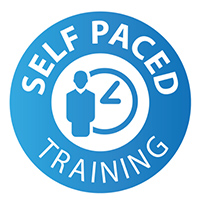Introduction
What is Verilog? • Brief history and current status • The PLI • Scope of Verilog • Design flow • Verilog-2001 • SystemVerilog • Verilog books and Internet resources
Differences between VHDL and Verilog
“Philosophy” • Red Tape • Strong typing • Determinisim • Data abstraction • Structure vs behaviour – Nets vs registers • Language structure – architecture, packages, configurations, files • Identifiers • Output ports • Implicit wires • Arrays • Aggregates • Signedness • Operators • Signal vs variables/nets • Process vs initial/always • if, case, loop differences • File i/o • Hierarchical names
Verilog Basics
Modules & ports • Continuous assignments • Comments • Names • Nets and strengths • Design hierarchy • Module instances • Primitive instances • Text fixtures • $monitor • Initial blocks • Logic values • Vectors • Registers • Numbers • Output formatting • Timescales • Always blocks • $stop and $finish • Using nets and variables correctly
Combinational Logic
Event control • If statements • Begin-endw Incomplete assignment and latches • Unknown and don’t care • Conditional operator • Tristates • Case, casez and casex statements • full_case and parellel_case directives • For, repeat, while and forever loops • integers • Self-disabling blocks • Combinational logic synthesis
Sequential Logic
Synthesising flip-flops & latches • Avoiding simulation race hazards • Nonblocking assignments • Asynchronous & synchronous resets • Clock enables • Synthesizable always templates
Other features of Verilog
Verilog operators • Part selects • Concatenation & replication • Shift registers • Conditional compilation • Parameterisation and generate • Hierarchical names • Arithmetic operators and their synthesis • Signed and unsigned values • Memory arrays • RAM modelling and synthesis • $readmemb and $readmemh
Tasks and Functions
Understanding tasks • Task arguments • Task synchronization • Tasks and synthesis • Functions
Test Fixtures
File I/O – Writing to files; File access using MCDs; Reading from files • Automated design verification using Verilog • Force and release • Gate-level simulation • Back annotation using SDF • “Traditional” Verilog libraries • Configuration and libraries • Command-line options • Behavioural modelling
Supplementary Subjects
Behavioural Verilog
Algorithmic coding • Synchronization using waits & event control • Concurrent-disabling of always blocks • Named events • Fork & join • High-level modelling using tasks, Implicit FSMs and concurrent-disabling • Understanding intra-assignment controls • Overcoming clock skew • Blocking and nonblocking assignments • Continuous procedural assignment
Gate Level Verilog
Structural Verilog • Using built-in primitives • Net types & drive strengths • UDPs Gate, net & path delays • Specify blocks • Smart paths • Pulse rejection • Cell library modelling
SystemVerilog
Background • Who is SystemVerilog for? • Current status of SystemVerilog • RTL enhancements • Interfaces • Assertions • Testbenches • C interface




